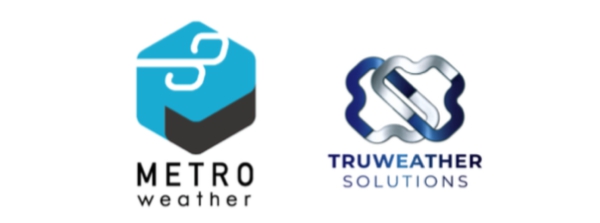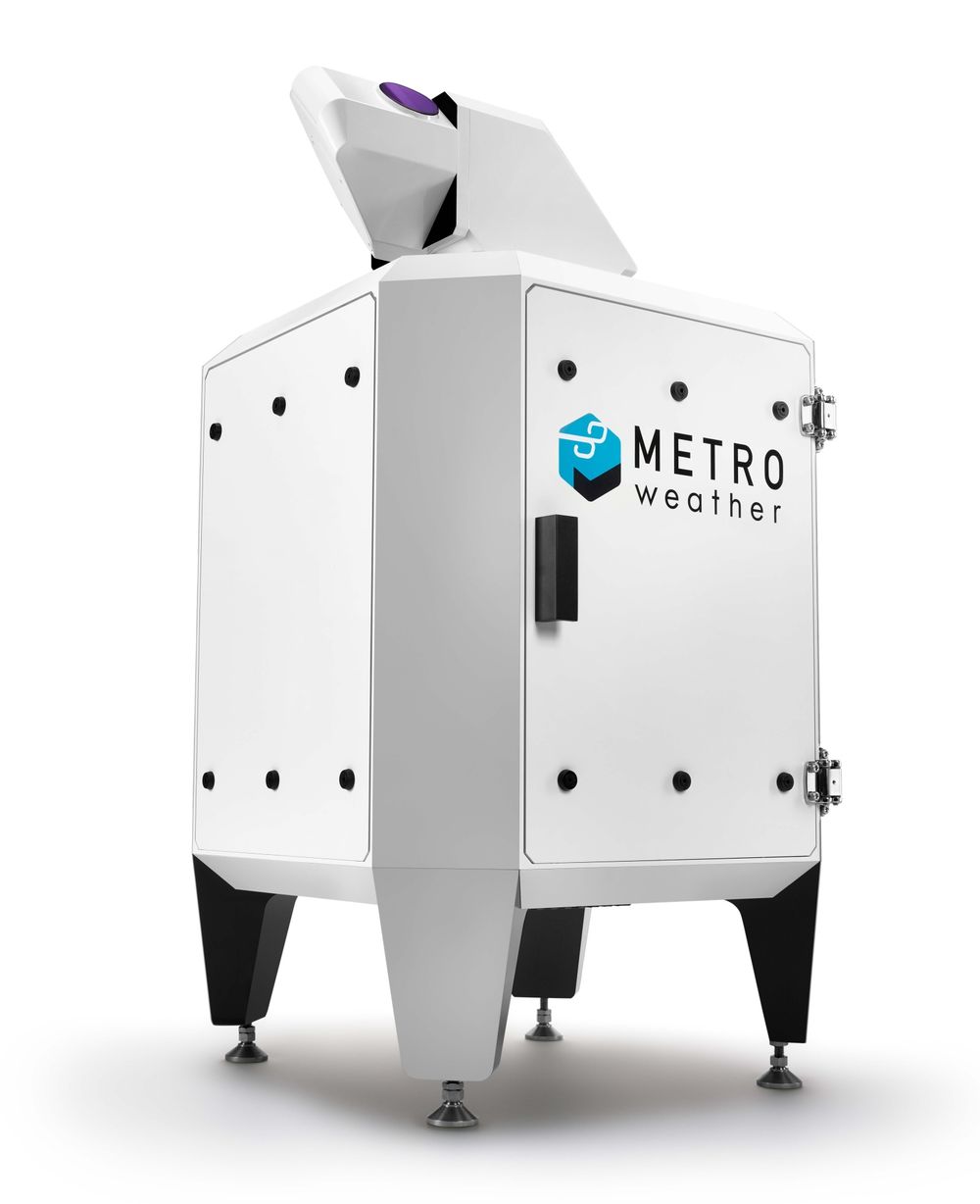Metro Weather Co., Ltd. , a Kyoto-based company providing high-precision information on wind conditions using compact, high-performance Doppler Lidar*, and TruWeather Solutions, Inc., a micro weather data and analytics company, have announced a collaborative contract to support “Urban Weather Sensing Infrastructure”, TruWeather’s Small Business Innovation Research (SBIR) contract with NASA.
Under this agreement, Metro Weather and TruWeather will leverage the strengths of both companies to build an urban weather observation infrastructure which could be used for a wide-scale deployment of commercial Urban Air Mobility. The combination of MetroWeather’s Doppler Lidar and TruWeather’s urban wind simulation system will help accelerate the development of next-generation weather services that are essential for the safe and affordable delivery of advanced air transportation services (AAM), especially in dense urban areas.
*Doppler Lidar is the atmospheric measuring device using infrared lasers to analyze the light reflected from microparticles in the atmosphere to acquire data on wind direction and wind speed from the speed and direction in which the microparticles move.
■ Roles of the two companies in this NASA SBIR project
The goal of this NASA SBIR project is to complete the design for the construction of Urban Wind Experiment (UWEX) in an urban environment, with an award of a potential Phase 2 contract. We are currently working on a Phase 1 of this project, and if we get awarded a Phase 2, the UWEX shall be carried out in the next fiscal year.
Metro Weather will play a core role by providing the optimal sensing algorithm and sampling strategy for the simulated lidar measurements in targeted urban areas and developing the model for multiple lidar data fusion using Metro Weather’s compact, high-performance Doppler lidars. Metro Weather will also design a system to deliver the observation data and API. Dr. Furumoto, CEO of Metro Weather, commented on the company’s participation in this NASA SBIR project as follows:
“The realization of small, high-performance Doppler Lidars at low cost will make it possible to deploy a large number of Doppler Lidars over drone ports (vertiports) and drone routes, and to visualize local wind gusts and windshear that affect drone takeoffs, landings, and flights in real time. It is also expected to deploy a number of lidars not only at drone ports but also at regional airports. As such, we believe we can contribute to the realization of safe drone operations and air safety and security. MetroWeather is very proud to partner with TruWeather and to engage in this NASA-funded project, which will bring us even closer to realizing such world.”
TruWeather will integrate the real-time wind measurement data acquired from multiple Doppler lidars into its urban wind model to design a system that efficiently and optimally predicts the weather needs of UAS and AAM.
“TruWeather is honored to team with MetroWeather to design a testbed with NASA focused on identifying hazardous wind conditions in urban areas. MetroWeather’s reputation for scientific excellence and Wind LIDAR technology for urban environments is a key component of the testbed to demonstrate the ability to detect wind shear conditions potentially impactful to safe and reliable advanced air mobility operations.”,
said Don Berchoff, CEO of TruWeather Solutions
■ Strengths of the two companies and the significance of this agreement
For three years starting in 2016, MetroWeather was awarded a basic research grant from the U.S. Office of Naval Research (ONR) to conduct a basic development of a Doppler Lidar for use on aircraft carriers. MetroWeather’s Doppler Lidar achieves an unprecedented level of compactness and higher performance at a lower cost by combining the hardware completed in the course of this ONR grant project with high-definition signal processing technology that CEO, Dr. Furumoto, has accumulated through his research in the fields of atmospheric metrology and measurement engineering.
TruWeather is the first weather solution provider for UAS and UTM. TruWeather has developed and operates TruFlite V360°, a subscription-based API that provides drone and air taxi operators with actionable weather insights designed to increase vehicle utilization rates and optimize stakeholder resources and scheduling for the best flight windows. The TruFlite V360° is based on TruWeather’s CFD simulation and data analysis technologies in urban areas.
Through cooperation in this project, MetroWeather and TruWeather will work to further advance next- generation weather services that are essential for the development of air mobility services.
Lidar, which stand for light detection and ranging, is technology that uses light to measure distance and is being adopted for autonomous automobiles. MetroWeather’s lidar sensors measure wind movement and speed by tracking fine dust in the atmosphere with an infrared laser.
The lidar has a range of 18 kilometers (11 miles), which means four of them perched on top of skyscrapers can cover all of central Tokyo. The coffee table-sized device weighs 130 kilograms (287 pounds), compared to a Japanese rival with similar specs that’s as large as a house, weighs several tons and costs ten times more at several million dollars, Furumoto said.
MetroWeather’s secret is in its proprietary signal processing algorithm, which allows use of a lower-power laser beam without sacrificing accuracy, Furumoto said. The company plans to introduce its first mass production model next March that will nearly halve the lidar’s dimensions and considerably reduce its price. Furumoto estimates the company has about a three-year lead against its rivals.
He co-founded MetroWeather in 2015 while working as an assistant professor at Kyoto University, where he also got his PhD in informatics, with a post-doc Kuniaki Higashi. The company is building on over 30 years of radar research at the university, which includes a baseball field-sized antenna array that’s been used to study the atmosphere since 1984.
MetroWeather, whose investors include Draper Nexus, Drone Fund and Real Tech Fund, is looking to raise several million dollars by the end of the year to expand its operations in the U.S. The company is targeting a revenue of several hundred million dollars as early as 2025.
Demand will begin to take off around 2025 with the development of what NASA calls urban air mobility maturity level-4, a rating system similar to that used for self-driving with the higher level corresponding to more advanced technology. At UML4, Nasa envisions hundreds of simultaneous flights taking off from urban aerodromes with vehicles exchanging information with each other to avoid collision.
MetroWeather estimates the ultimate market for its services will be measured in billions of dollars, up from less than $100 million now focused mostly on wind power. Drone inspections of infrastructure and medical applications which call for speedy delivery of high-value low-weight payloads are likely to follow, Furumoto said. He acknowledged that it’s not yet clear what the mass market use of the technology will be.
“It could be logistics or flying taxis,” he said. “That’s what everyone is trying to figure out now.”
Sources: Press Release; Yahoo News


